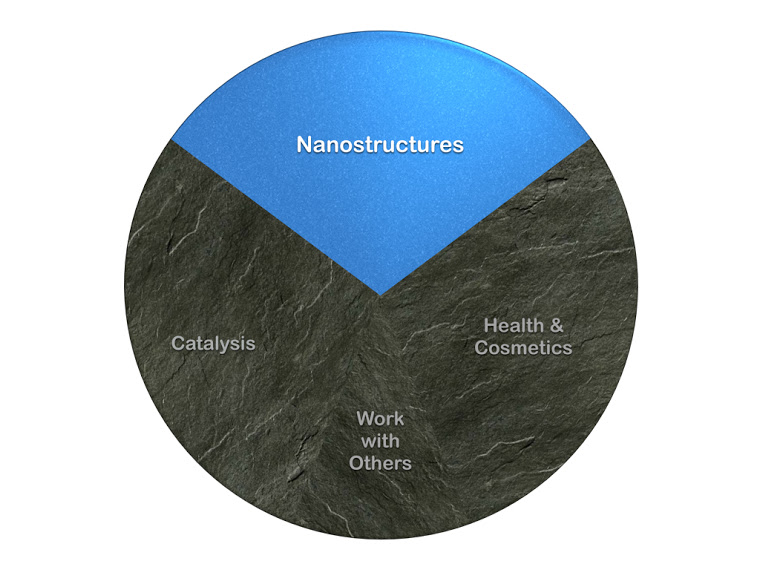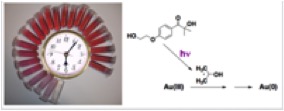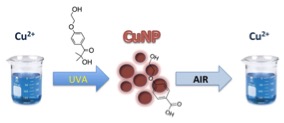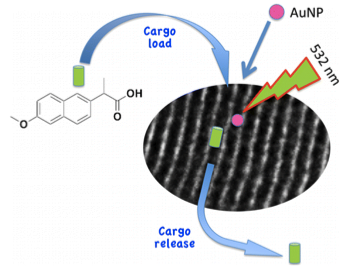Nanostructures
Nanostructures
Our group has interest in a variety of nanostructures, including metal nanoparticles, their oxides, and carbon-based structures, semiconductors and mesoporous materials. We work on the design of intelligent hybrid nanomaterials that can find applications in different areas. Over the last decade we have successfully employed photochemistry as a route for the controlled synthesis of nanomaterials that are later used in a variety of applications in catalysis, spectroscopy studies (such as surface enhanced Raman spectroscopy (SERS)), imaging lithography and biomedicine.

In 2006 our group published a JACS communication (J.Am. Chem. Soc. 2006, 128, 15980) that represented a paradigm change in the way in which unprotected nanoparticles can be prepared in just a few minutes and at room temperature. The reaction takes advantage of the strong electron donating properties of ketyl radicals to reduce Au(III) to Au(0) in solution; the latter spontaneously makes gold nanoparticles (AuNP).

Since our initial discovery in 2006 our work has covered many metals and applications, for example…
|
“Facile Photochemical Synthesis and Characterization of Highly Fluorescent Silver Nanoparticles” JACS, 2009, 131, 13972 |
"Oxidation of copper nanoparticles in water: mechanistic insights revealed by oxygen uptake and spectroscopic methods” Dalton Trans .,2013, 42, 5832. |
Aspartame-stabilized gold-silver bimetallic biocompatible nanostructures with plasmonic photothermal properties, antibacterial activity and long-term stability” JACS, 2014, 136, 17394. |
In addition to their intrinsic catalytic properties, many nanostructures show characteristic ‘plasmon bands’. Selective excitation of the nanoparticle (NP) surface plasmon absorption can generate localized heating allowing for the study of reactions requiring high temperatures at otherwise ambient conditions. This heat can also modify the surface closest media and promote structural rearrangements and molecule releases.
|
"Plasmon induced self-assembly of gold nanorods in polymer films" Chem. Comm., 2015, 51, 1911. |
“Plasmon Excitation of Supported Gold Nanoparticles can Control Molecular Release from Supramolecular Systems” |




